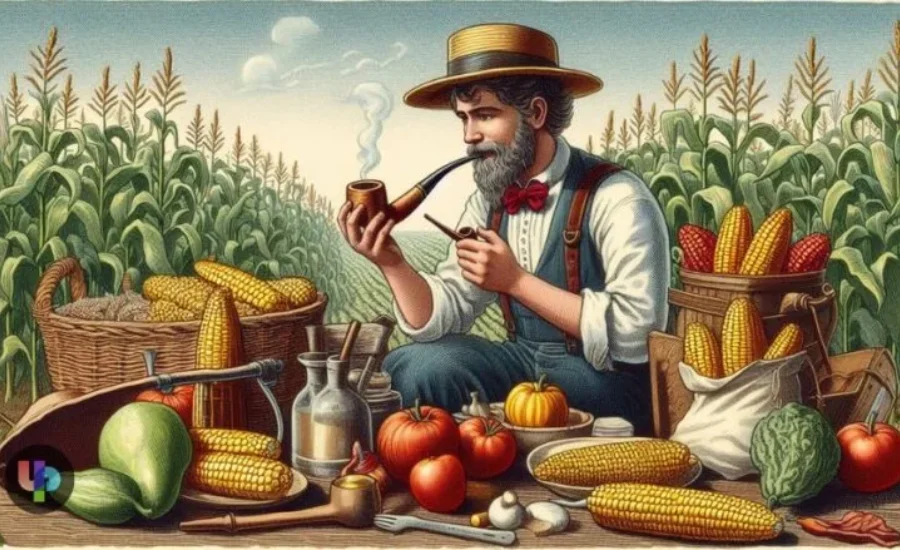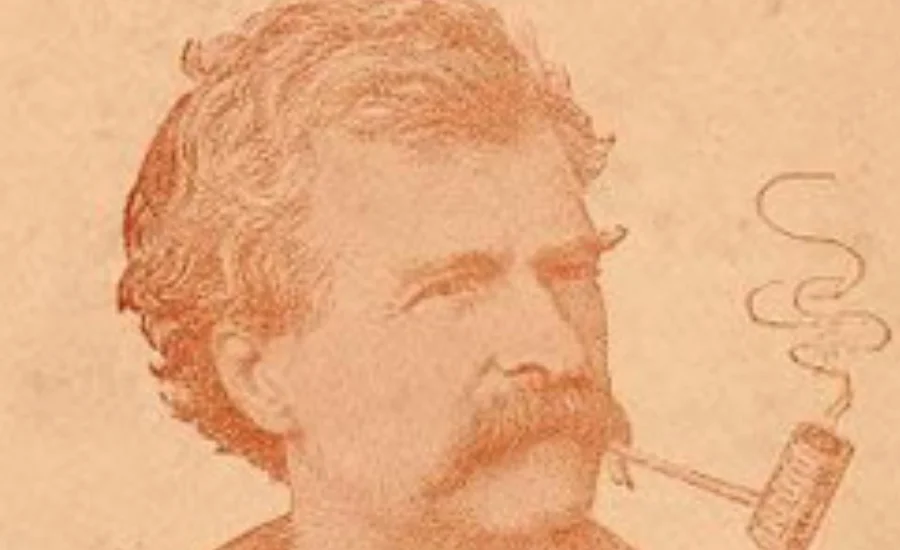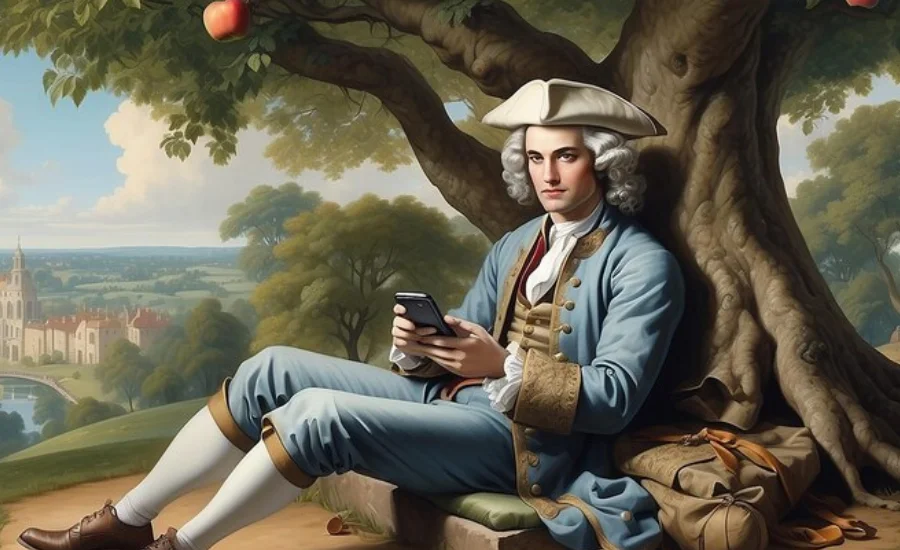Google Images HuckleBerry Finn Illustrations Corncob [Pipe The protagonist of Mark Twain’s classic book, The Adventures of Huckleberry Finn,” has gained widespread recognition as a literary icon. Frequently portrayed with his distinctive corncob pipe, Huckleberry Finn represents an adventurous and carefree attitude toward life. This specific element serves as a visual shorthand for Huck’s desire for independence and adventure in addition to highlighting his individuality.
Readers’ impressions of Huck have been greatly influenced by the illustrations that have been included with the book in different versions. One particularly potent symbol of his personality that captures his rustic appeal and spirit of adventure is the corncob pipe.
With resources like Google Images, enthusiasts and scholars can readily explore a rich array of illustrations that capture this beloved character in various artistic interpretations. Each illustration not only enhances the narrative but also invites deeper engagement with Huck’s journey, revealing the enduring impact of Twain’s work on both literature and visual culture.
The Enduring Legacy of Huckleberry Finn: A Journey Through Illustrations

The Adventures of Huckleberry Finn has enthralled readers ever since it was first published in 1884, both because of its Story and the numerous pictures that have been included with it throughout the years. By providing visual interpretations that enhance the text, these pictures act as an essential link between readers and the narrative.
Early illustrations mostly focused on Huck and Jim’s escapades, frequently capturing their lively and mischievous personalities. Artists like Edward A. Wilson were instrumental in setting the tone, using lively sketches to breathe life into Mark Twain’s characters and scenes.
As societal norms evolved, so too did the artistic representations of Huck’s journey. Google Images HuckleBerry Finn Illustrations Corncob [Pipe The mid-20th century introduced more stylized interpretations that engaged with contemporary themes and social issues, allowing artists to explore colors and forms that resonated with modern audiences. Even for younger generations, this development made sure that Huck’s adventures were still current and approachable.
A quick search in the current digital era yields a multitude of artistic forms, from modern digital art to antique engravings. These drawings continue to pique interest and highlight how timeless Twain’s story is. Each artistic era adds new layers of meaning, providing fresh perspectives while ensuring that Huck’s legacy remains vibrant within popular culture.
The Symbolism of the Corncob Pipe in Huckleberry Finn: A Reflection of Rural America
The corncob pipe, which captures the spirit of frontier life and its innate simplicity, is a moving representation of rural America. These pipes, which were widely used in the 19th century, gained popularity as smoking devices because they were accessible and reasonably priced for individuals of all backgrounds.
This unassuming pipe embodies the grounded, independent spirit of characters like Huckleberry Finn, who embrace personal freedom and adventure over societal norms. Huck’s relationship with the corncob pipe signifies not only practicality but also a deeper narrative. It marks his transition into adulthood, illustrating his burgeoning maturity while highlighting his estrangement from traditional authority figures.
The corncob pipe is a distinguishing feature that places Huck in a particular historical setting and strengthens his visual identity in creative renderings. A Google Images search for images of Huckleberry Finn with the corncob pipe finds a wide range of interpretations, highlighting the instrument’s significance in forming Huck’s personality and reaffirming the ideas of independence and self-reliance found in Twain’s writing. The corncob pipe, which represents both Huck’s spirit of adventure and the larger cultural milieu of rural America, reverberates with viewers through these images.
The Corncob Pipe in Huckleberry Finn: A Symbol of Simplicity and Freedom
In Mark Twain’s The Adventures of Huckleberry Finn, the corncob pipe becomes more than just a smoking device; it represents Huck’s longing for a simple, rural life. Huck’s fondness for this unassuming pipe illustrates his deep connection to the natural world and his quest for independence, highlighting his reflective moments along the way.
As a cultural artifact, the corncob pipe represents tradition and American identity during the time period in which the novel is set. It evokes imagery of rural America, where these pipes were widely used by men, embodying the straightforward lifestyle that Huck admires.
Although other narrative symbols, like the river or the raft, have their own intricacies, the corncob pipe is surprisingly straightforward but profound. Even as Huck negotiates the complex moral conundrums and social obstacles that characterize his experiences, its existence acts as a moving reminder of his innocence. The corncob pipe thus captures the spirit of Huck’s personality as well as the timeless ideals of liberty and simplicity that run through Twain’s writing.
Evolving Artistic Representations of Huckleberry Finn: A Reflection of Society and Style
Google Images HuckleBerry Finn Illustrations Corncob [Pipe Over the years, artistic interpretations of The Adventures of Huckleberry Finn have transformed significantly, reflecting shifts in societal attitudes, artistic movements, and technological advancements. Early illustrations were often created using woodcut engravings or pen and ink, endowing Huck’s character with a raw, simple charm that resonated with readers of that era.
With the advent of color printing, illustrations began to evolve, revealing richer details and accentuating key elements such as Huck’s iconic corncob pipe. This change strengthened the reader’s bond with Huck’s character and his adventure while also improving the visual experience.
These days, a fast Google Images search reveals a wide range of artistic styles related to Huckleberry Finn, from playful, cartoon-like designs to photorealistic depictions. One thing is constant throughout the range of artistic expression: Huck is usually seen holding his corncob pipe. As a moving reminder of the character’s origins and the ageless themes of freedom and adventure that characterize Mark Twain’s beloved story, this enduring symbol emphasizes his country upbringing and rebellious attitude.
The Evolution of Illustrations in Huckleberry Finn: Navigating Complexity and Representation
The illustrations of Huckleberry Finn and Jim have long ignited important discussions surrounding artistic representation and racial sensitivity. Artists face the daunting task of capturing these complex characters while honoring the narrative’s profound themes.
In earlier interpretations, some artists relied on stereotypes that risked undermining Jim’s humanity and depth. Critics have raised concerns that these portrayals perpetuate harmful narratives, overshadowing the rich emotional and personal dimensions of his character.
Today, contemporary artists are confronted with this historical legacy as they strive to remain faithful to Mark Twain’s original themes of friendship and freedom. The challenge lies in striking a balance between historical authenticity and respectful representation, a task that requires careful consideration.
Many modern illustrations endeavor to recast these characters, placing a greater emphasis on their agency and emotional journeys. This shift reflects an ongoing evolution in artistic interpretation within the context of current societal conversations about race, identity, and history. Each new illustration not only revitalizes Twain’s narrative but also contributes to a broader understanding of how art shapes our perceptions of classic literature and its characters. For More About Ridibooks
The Captivating Evolution of Illustrations in Huckleberry Finn
The evolution of illustrations for Huckleberry Finn tells a fascinating story of artistic expression since the novel’s publication in 1884. A diverse array of artists has brought their unique interpretations to Mark Twain’s cherished characters over the decades.
Early editions prominently featured detailed woodcuts that conveyed the gritty realities of life along the Mississippi River. These illustrations emphasized realism and historical fidelity, adhering to the artistic standards of their time. As the years progressed, illustrators began to infuse their personal styles into the narratives, transforming the visual landscape of Huck and Jim’s adventures.
The whimsical illustrations that emerged in the mid-20th century marked a significant departure from earlier, more serious depictions. This playful approach highlighted the dynamic and often humorous relationship between Huck and Jim, offering a fresh perspective on their journey. Such variations in artistic interpretation not only reflect changing societal attitudes but also enrich the ongoing dialogue surrounding this timeless tale, ensuring that it resonates with new generations of readers.
The Captivating Evolution of Google Images HuckleBerry Finn Illustrations Corncob [Pipe

Since the novel’s 1884 release, the development of Huckleberry Finn’s drawings reveals an intriguing tale of creative expression. Over the years, a wide range of artists have contributed their own interpretations to Mark Twain’s beloved characters.
Detailed woodcuts that depicted the harsh reality of living along the Mississippi River were a notable element of early editions. Following the aesthetic conventions of their day, these pictures placed an emphasis on historical accuracy and realism. The visual world of Huck and Jim’s travels changed as the years went by as illustrators started incorporating their own styles into the stories.
In contrast to older, more somber representations, the humorous pictures that first appeared in the middle of the 20th century represented a substantial shift. This lighthearted approach provided a new viewpoint on Huck and Jim’s adventure while highlighting their dynamic and frequently funny friendship. Also Check This Discover Out In addition to reflecting shifting social views, these artistic interpretations contribute to the continuing discussion about this classic story and guarantee that it will continue to be relevant to readers of future generations.
Read More: Pavan Reddy Bangalore Wife Racherla
Final Words
Google Images HuckleBerry Finn Illustrations Corncob [Pipe The essence of Mark Twain’s adored character and the novel’s larger concerns are captured in the pictures of Huckleberry Finn, especially those that feature Huck’s famous corncob pipe. This straightforward but meaningful emblem serves as a visual reminder of Huck’s independent nature and rural origins while also symbolizing his link to a life of freedom and adventure. These pictures have been essential in influencing how readers have viewed Huck and his adventure as creative interpretations have changed throughout time. In addition to showcasing Huckleberry Finn’s continuing cultural significance, the variety of illustrations made available by websites like Google Images also encourages new audiences to interact meaningfully with Twain’s story. The corncob pipe, in its various artistic renditions, continues to signify the timeless nature of Huck’s quest for identity and belonging in a complex world.
For More Information Check It On This Link Discover OUt
